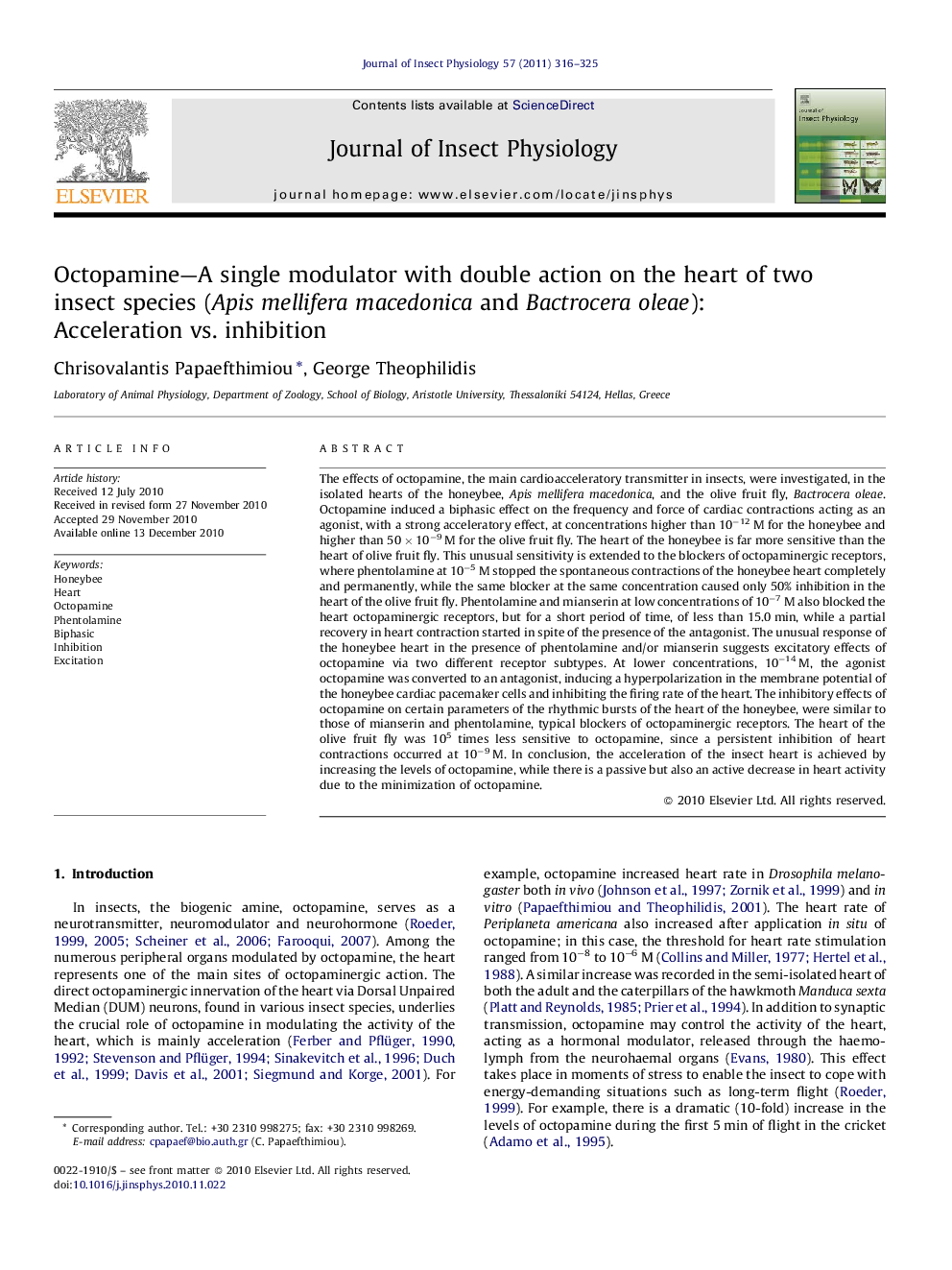| کد مقاله | کد نشریه | سال انتشار | مقاله انگلیسی | نسخه تمام متن |
|---|---|---|---|---|
| 2840650 | 1165342 | 2011 | 10 صفحه PDF | دانلود رایگان |

The effects of octopamine, the main cardioacceleratory transmitter in insects, were investigated, in the isolated hearts of the honeybee, Apis mellifera macedonica, and the olive fruit fly, Bactrocera oleae. Octopamine induced a biphasic effect on the frequency and force of cardiac contractions acting as an agonist, with a strong acceleratory effect, at concentrations higher than 10−12 M for the honeybee and higher than 50 × 10−9 M for the olive fruit fly. The heart of the honeybee is far more sensitive than the heart of olive fruit fly. This unusual sensitivity is extended to the blockers of octopaminergic receptors, where phentolamine at 10−5 M stopped the spontaneous contractions of the honeybee heart completely and permanently, while the same blocker at the same concentration caused only 50% inhibition in the heart of the olive fruit fly. Phentolamine and mianserin at low concentrations of 10−7 M also blocked the heart octopaminergic receptors, but for a short period of time, of less than 15.0 min, while a partial recovery in heart contraction started in spite of the presence of the antagonist. The unusual response of the honeybee heart in the presence of phentolamine and/or mianserin suggests excitatory effects of octopamine via two different receptor subtypes. At lower concentrations, 10−14 M, the agonist octopamine was converted to an antagonist, inducing a hyperpolarization in the membrane potential of the honeybee cardiac pacemaker cells and inhibiting the firing rate of the heart. The inhibitory effects of octopamine on certain parameters of the rhythmic bursts of the heart of the honeybee, were similar to those of mianserin and phentolamine, typical blockers of octopaminergic receptors. The heart of the olive fruit fly was 105 times less sensitive to octopamine, since a persistent inhibition of heart contractions occurred at 10−9 M. In conclusion, the acceleration of the insect heart is achieved by increasing the levels of octopamine, while there is a passive but also an active decrease in heart activity due to the minimization of octopamine.
.Figure optionsDownload as PowerPoint slideResearch highlights▶ Octopamine acts as agonist and antagonist in insect heart. ▶ Excitation of honeybee heart occurred at concentrations ≥10−12 M. ▶ Inhibition of honeybee heart occurred at concentrations of 10−14 M. ▶ The heart of olive fruit fly was inhibited by 10−9 M octopamine. ▶ The heart of olive fruit fly was 105 times less sensitive to octopamine.
Journal: Journal of Insect Physiology - Volume 57, Issue 2, February 2011, Pages 316–325